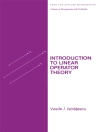This volume is an effort to bring together important contributions to the mathe- matical development of demography and to suggest briefly their historical context. We have tried to find who first thought of the several concepts and devices commonly used by demographers, what sort of problem he was facing to which the device or concept seemed the solution, and how his invention developed subsequently in the hands of others. Historically, the book starts with a Roman table of life expectancies from the third century a. d. about which we know little, and with John Graunt’s explora- tions in an area that was still popularly suspect when he wrote in 1662. These are followed by the astronomer Halley, who looked into the field long enough to invent the life table and to notice that Their Majesties would take a sizeable loss on the annuity scheme they had just launched; and by Euler, who was first to devise the formulas of stable population theory and to apply them to filling gaps in data To these we add the handful of further contributions in the 19th century and many pieces from the explosion of contributions that began in this century with Lotka. We doubt that we have managed to trace everything back to its ultimate beginning, and suspect that our nominees in some cases have been anticipated by predecessors who will be turned up by other students.
Nathan Keyfitz & D. Smith
Mathematical Demography [PDF ebook]
Selected Papers
Mathematical Demography [PDF ebook]
Selected Papers
购买此电子书可免费获赠一本!
语言 英语 ● 格式 PDF ● ISBN 9783642810466 ● 出版者 Springer Berlin Heidelberg ● 发布时间 2012 ● 下载 3 时 ● 货币 EUR ● ID 6333949 ● 复制保护 Adobe DRM
需要具备DRM功能的电子书阅读器












